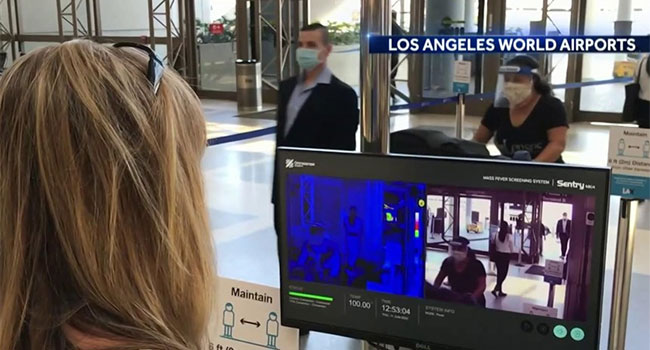
LAX Just Installed Thermal Cameras
Officials want to make sure travelers don’t have a fever, then fly
- By Ralph C. Jensen
- Jun 25, 2020
Passengers at Los Angeles International Airport may notice something new watching them — thermal cameras.
There is something new at Los Angeles International Airport. Passengers may notice additional cameras — thermal cameras to ensure travelers don’t have a fever. The cameras are placed at the Tom Bradley International Terminal, searching passenger who might have above-average body temperatures.
The cameras will not store, transmit or share data or images.
The decision to install the cameras was announced by LA mayor Eric Garrett and the Los Angeles Worth Airports. Officials are hoping the cameras will help fight coronavirus. The thermal scans are voluntary.
LAX is expected to add signs, explaining to passengers where they would be scanned for thermal body temperatures. Anyone testing100.4 degrees or above will be given a second test. At this point, staff from the Centers for Disease Control and Prevention may get involved, and some passengers might be made aware that traveling is not in their best interest at that moment because of a higher that normal body temperature.
“A world-class airport isn’t defined just by our historic investments in a reimagined LAX and an improved traveling experience — it’s also about world-class safety,” Garrett said. “This project reflects the best of this city’s innovative spirit, and it will help keep travelers healthy and set a new industry standard.”
“Our Terminal Wellness Pilot Project is part of our extensive efforts to protect all those traveling through LAX and is another example of how LAWA is setting new standards for the airport industry with best practices, technology and innovation,” said Justin Erbacci, LAWA’s CEO designate, of the program.
About the Author
Ralph C. Jensen is the Publisher/Editor in chief of Security Today magazine.